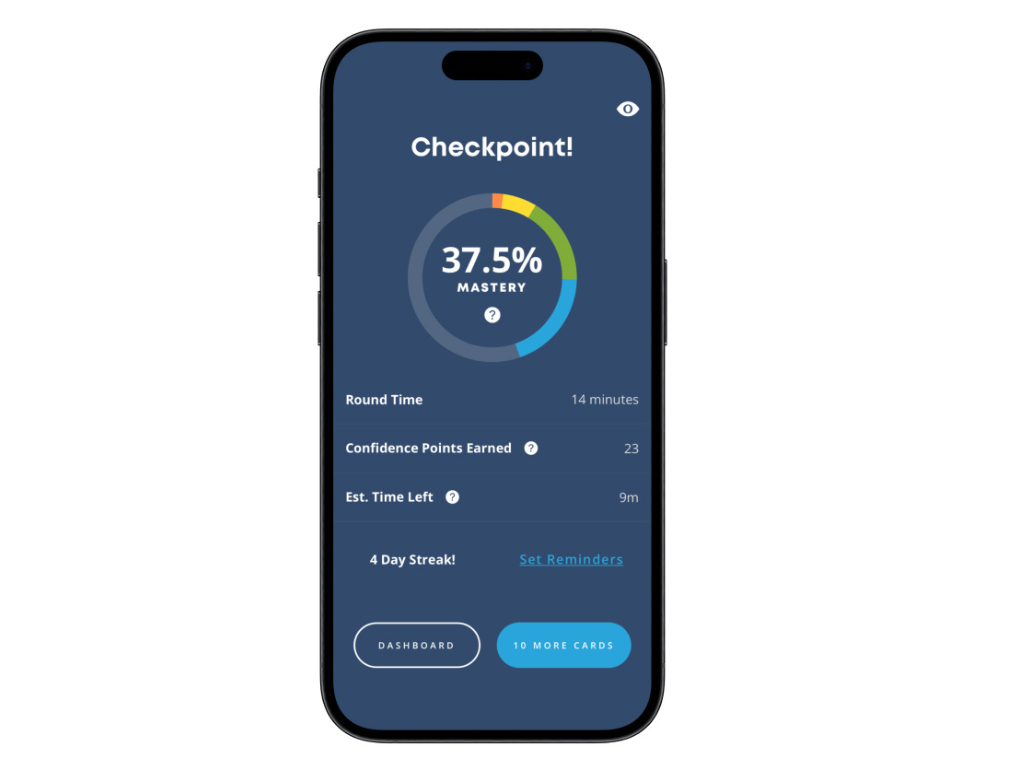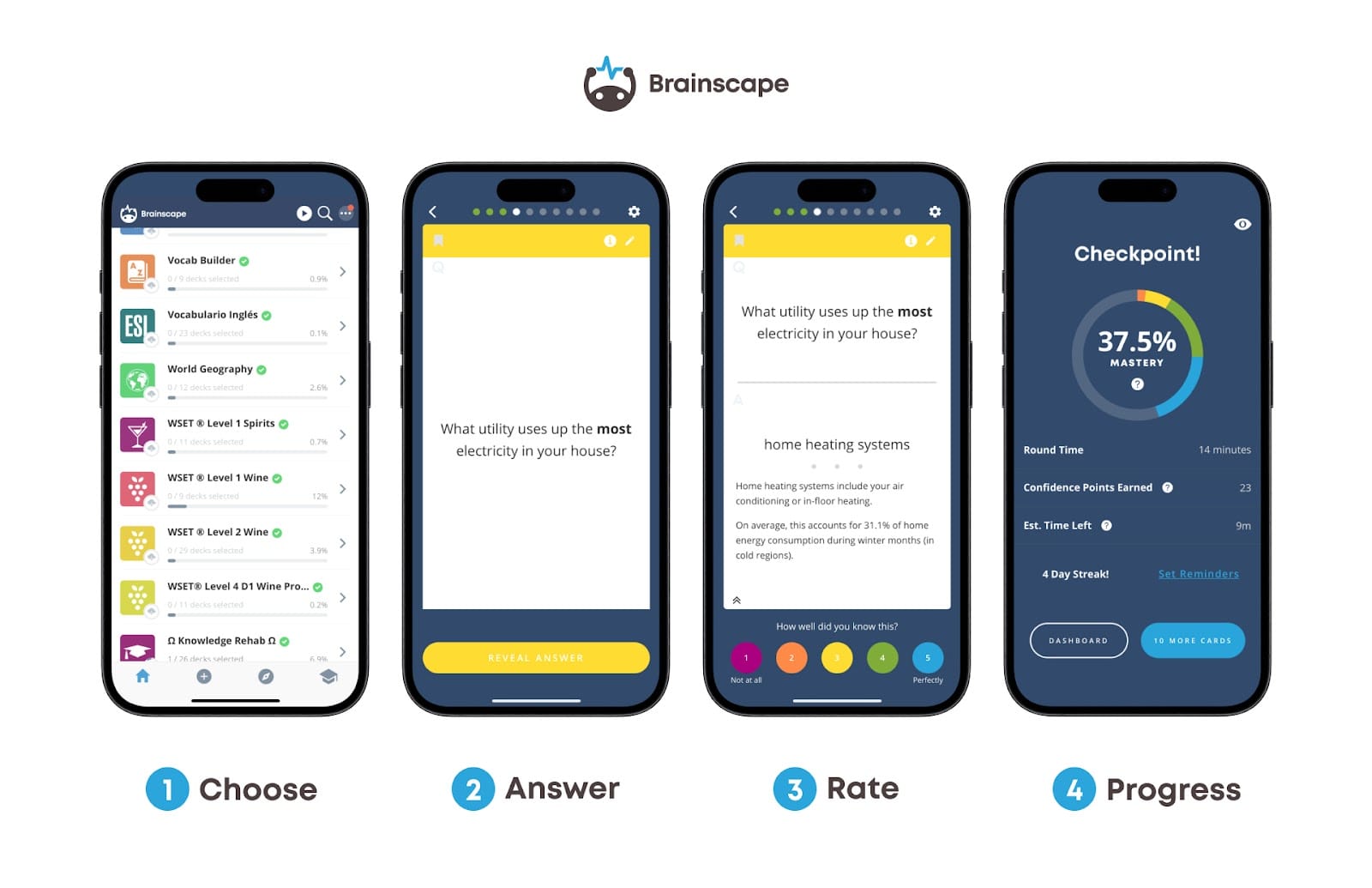Whether you're grinding through bar exam prep, cramming for finals, or finally tackling that daunting anatomy class, one thing's for sure: studying in isolation can be a slog.
But guess what? You don't have to go it alone.
Enter social motivation: a powerful, often overlooked tool in your study arsenal. By tapping into your network, your peers, or even your competitive streak, you can transform your study habits and boost your long-term learning.
What is Social Motivation in Learning?
At its core, social motivation is the idea that our drive to succeed can be shaped by our social interactions. This isn’t just feel-good psychology. It's backed by a solid theoretical framework known as Social Motivation Theory.
Social Motivation Theory suggests that people are more likely to engage in tasks when they feel connected to others, are recognized for their efforts, or perceive themselves as part of a community.
In the context of learning, this means students are more motivated when they're part of a supportive, collaborative environment. When learners study with others or share progress, they often feel more accountable, experience less isolation, and gain a sense of belonging.
The takeaway? Humans are social creatures. Studying doesn't have to be a solo sport, although there are caveats to this wisdom that we’ll discuss in a bit.
What Strategies Help You Harness Social Motivation?
Here are some simple but effective strategies for using social motivation to compel you to put more effort into your studies:
1. Form or Join a Study Group
This classic method still works. Regular meetups (in person or virtual) create a shared commitment to stay on track. Even if you're not reviewing the same material, the routine helps reinforce motivation.
That said, the type of studying you do during this social time matters.
For study groups to be productive, every group member should come prepared, having already reviewed the sections or chapters you intend to focus on. The group time is not spent on trying to learn the content for the first time, but rather to digest it through discussion, tackling problem sets together, and asking/answering questions.
Furthermore, each person should be responsible for a section or chapter, for which they should create pre-written notes and flashcards for. You then pool these assets, effectively cutting the workload by up to 85% (because six is the ideal group number).
This is the best way to study in a group. (Also check out our video on how to get the most out of group study…)
2. Share Your Goals Publicly
Announce your study goals to friends, family, or on social media. This creates light external pressure and helps you stay consistent. Accountability is a powerful motivator.
3. Set Up Friendly Competitions
Leaderboards, streaks, and challenges can trigger your healthy competitive edge. (More on how Brainscape does this in a sec.)
4. Teach Someone Else
Explaining a concept to a peer isn’t just helpful for them—it forces you to organize and clarify your own knowledge. It’s called the Feynman Technique and it’s one of the most powerful ways to deeply ingrain new information: by explaining it in the simplest possible terms to another human being (or potted plant… or pet…).
5. Celebrate Progress Together
When your crew celebrates milestones together, the positive reinforcement amplifies your commitment to learning. It’s also really nice to bond over things that are actually productive! That’s why exercise buddies or groups go such a long way to helping you meet your fitness goals!
How Can You Integrate Personal Factors for Motivation?
While social motivation is a powerful external driver, your own personal needs and traits still play a huge role. This is where intrinsic motivation comes in—your internal drive to master a subject because you find it interesting or meaningful or care deeply about the outcome (graduating and getting a job in an exciting field).
The best study systems take both personal and social motivators into account. You want to feel inspired by your goals and supported by your environment.
So how do you build that kind of system?
What’s the Best Study Tool for Social Motivation?
Brainscape—a smart, flashcard app—was designed with social motivation baked into the platform. Whether you're using our expert-curated certified flashcard decks or building your own, you’re always connected to a larger learning community.
Here’s how we help you tap into your social drive:
Track (& Compare) Progress & Study Stats
Brainscape lets you track your progress and view your streaks, stats, and mastery scores, which you can compare with classmates or study buddies. It’s a subtle, gamified nudge that helps you stay accountable.

Collaborate on Making Flashcards
Creating flashcards in Brainscape is easy, but it’s even better with friends and classmates. Invite others to build decks with you, send edit suggestions for flashcards you’ve already made, or study from decks created by top students and educators. Together, you can divide and conquer the workload of making flashcards for your class and ensure that your study assets are as accurate and complete as possible (with multiple eyes on them).
Challenge Your Peers
Brainscape's class leaderboard allows you to see each other's progress (if you have Pro), and even compete on the number of flashcards studied. It turns studying into a bit of a healthy competition, which can be a powerful motivator.
Just remember though that your priority is to genuinely master the content. Brainscape’s spaced repetition algorithm won’t work optimally if you rush through your flashcards in an effort to rack up higher scores. That strategy may put you at the top of the leaderboard but your test results will tell a different (pretty embarrassing) story!
How Can You Enhance Intrinsic & Extrinsic Motivation?
Balancing intrinsic and extrinsic motivation is key to long-term learning. Social motivation sits right in the sweet spot between the two:
- Intrinsic: The source of motivation lies within you, i.e. you want to master the material.
- Extrinsic: The source of motivation lies outside of you, i.e. you want to hit your goals, show your progress, and not fall behind your friends.
Brainscape supports both:
- Our adaptive spaced repetition system is ideal for deep, long-term learning.
- Our collaborative and progress-tracking features give you the social kick you need to keep going.
The result? You’re more likely to stick with your study plan, retain what you learn, and actually enjoy the process.

How Can Educators Use Social Motivation?
If you're an educator, building social motivation into your teaching isn’t just a nice bonus—it could be essential. Here’s how you can help:
- Encourage group study, projects, and assignments.
- Rather than you being the only source of feedback in the classroom, encourage students to critique or provide gentle feedback.
- Get students to collaborate on flashcard creation and editing.
- Highlight examples of students helping one another.
FAQ: How to Use Social Motivation to Study
What are Some Examples of Social Motivation?
Some examples of social motivation—especially in the context of learning and education are:
- Peer competition: You study harder to outperform a friend or rank higher on the class leaderboard.
- Group accountability: You review flashcards regularly because you’re part of a study group that meets every week.
- Recognition and praise: You complete your homework diligently to receive positive feedback from a teacher or a shout-out in front of the class.
- Parental approval: You put in extra effort studying for a test because you want to make your parents proud.
- Social belonging: You join a debate club or honors society and study more to maintain your membership and feel like part of the group.
- Helping others: You learn a concept thoroughly so you can confidently tutor a classmate or sibling.
- Sharing progress: You use an app like Brainscape and are motivated to complete more flashcards so you can share your progress with friends or compare streaks.
What is Social Motivation in Education?
Social motivation in education refers to the drive to learn or succeed that comes from social influences—like the desire for connection, recognition, or acceptance by others. Rather than being purely internally driven (like curiosity) or externally incentivized (like grades or rewards), social motivation is rooted in relationships and group dynamics.
What is the Best Motivation for Studying?
The best motivation for studying is often a mix of intrinsic and extrinsic factors, tailored to what works for YOU, specifically. That said, intrinsic motivation—driven by curiosity, personal goals, or a genuine interest in the subject—tends to be the most powerful and sustainable in the long term.
When you want to learn because you find the material meaningful or enjoy the challenge, you’re more likely to retain knowledge, persist through difficulty, and feel satisfied with your progress. That said, external motivators like grades, praise, future career goals, or social recognition can also be effective—especially when they’re aligned with your deeper values.
Bringing It All Together: Study Smarter with Social Motivation
You don’t have to study alone, and you definitely don’t have to rely only on willpower.
By tapping into social motivation and grounding your efforts in a strong theoretical framework like Social Motivation Theory, you can enhance your intrinsic motivation, boost retention, and make studying a lot less painful.
Brainscape is here to make that process smoother, faster, and a whole lot more fun. So grab your friends, build a class, and study smarter. Together.
References
Eisenkopf, G. (2010). Peer effects, motivation, and learning. Economics of Education Review, 29(3), 364–374. https://doi.org/10.1016/j.econedurev.2009.08.005
Morris, L. S., Grehl, M. M., Rutter, S. B., Mehta, M., & Westwater, M. L. (2022). On what motivates us: A detailed review of intrinsicv.extrinsic motivation. Psychological Medicine, 52(10), 1801–1816. https://doi.org/10.1017/s0033291722001611
Urhahne, D., & Wijnia, L. (2023). Theories of motivation in education: An integrative framework. Educational Psychology Review, 35(2). https://doi.org/10.1007/s10648-023-09767-9
Wentzel, K. R. (1999). Social-motivational processes and interpersonal relationships: Implications for understanding motivation at school. Journal of Educational Psychology, 91(1), 76–97. https://doi.org/10.1037//0022-0663.91.1.76
